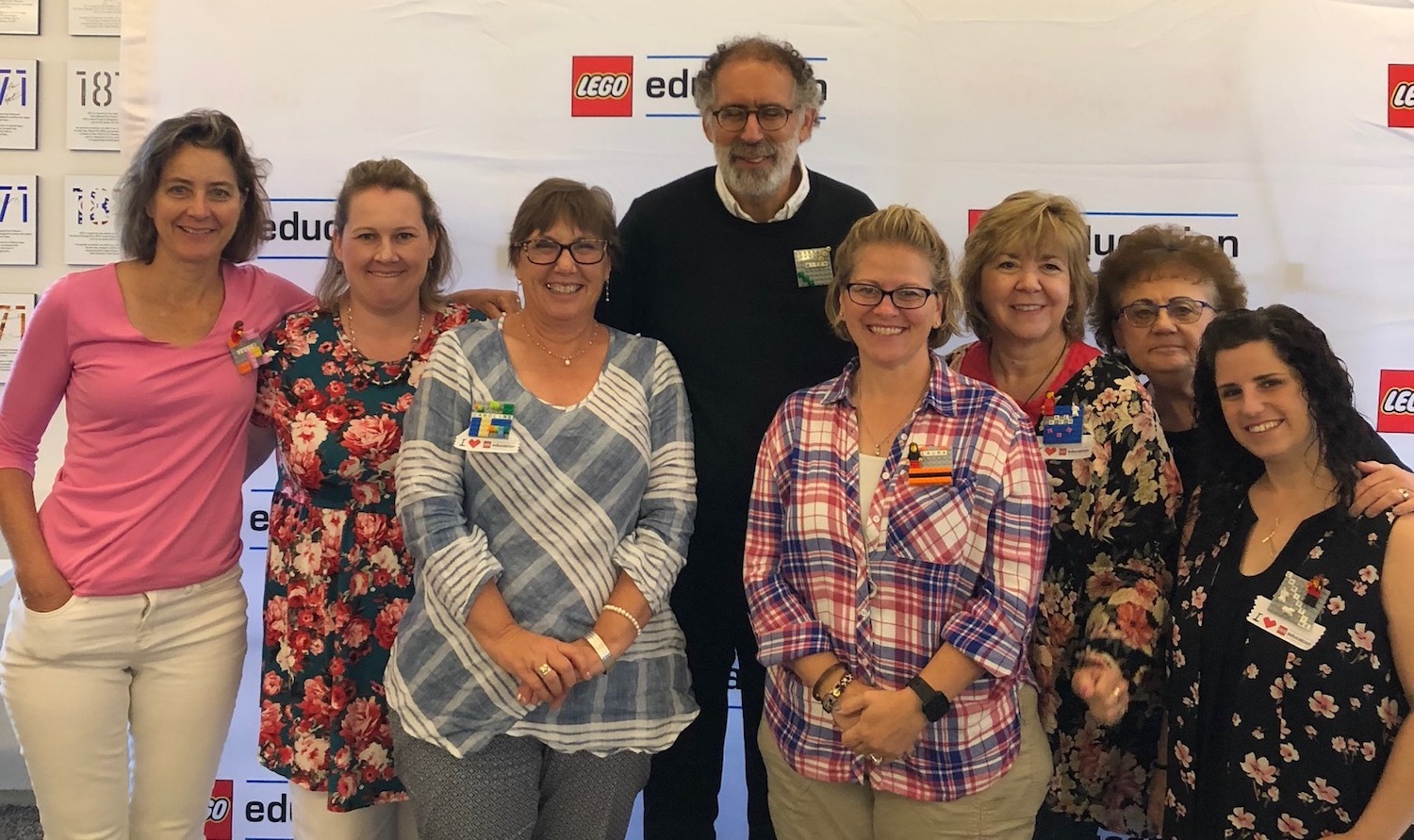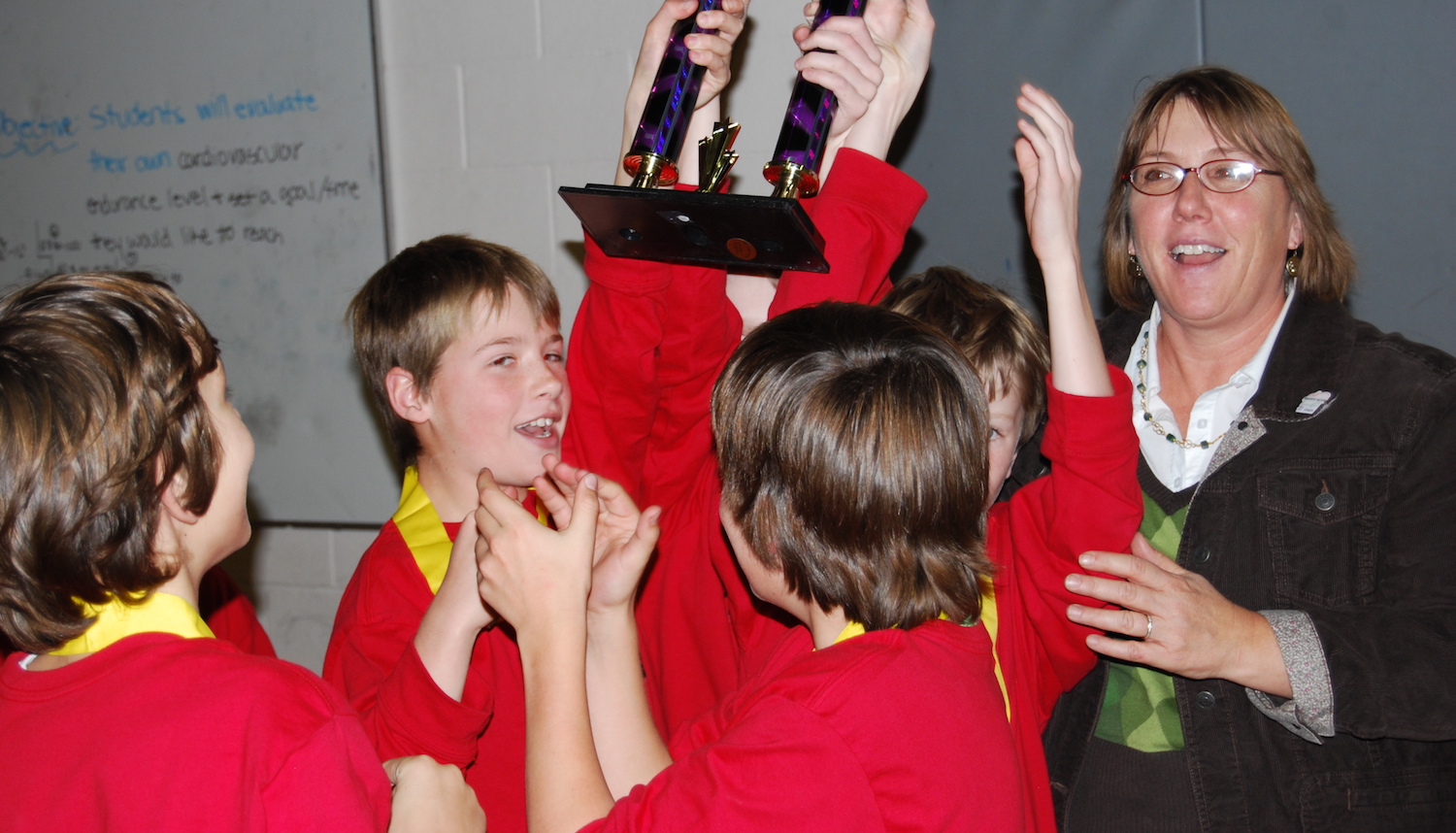FIRST LEGO League in the Classroom

Caroline Hanson is a LEGO Education Master educator from Aspen, Colorado. She teaches FIRST LEGO League as part of enrichment and PBL classes.
MINDSTORMS and FIRST LEGO League in a classroom
I have always been a fan of LEGO bricks. About ten years ago, I moved from teaching high school English to teaching Gifted and Talented Enrichment and Explorations classes at a middle school. At that time, I used the NXT. I thought it was a great way to engage students and apply math and creative thinking. I have since moved into using WeDo with summer programs and using EV3 for elective classes.
FIRST LEGO League keeps me going as a teacher! I started coaching two teams, but I now coach 12 teams through our middle school. We are lucky to meet during the school day. I also host a regional tournament in November. Students who are interested submit an application in the spring. I am able to field teams by grade levels 5 - 8. My partner at the elementary school recommends students who participated in LEGO league Junior (her Expo is at our Regional Tournament). Since I have about 80 students involved, students hear from each other. We are a small school district, so word gets around.

FIRST During the School Day
I believe FIRST belongs in the school day because it offers so many opportunities for writing, speaking, research, creative thinking, applied math, coding, spatial thinking, and engineering. I run my teams through elective courses, and I am fortunate to be able to run a seventh grade Project-based Learning class: Integrated Language Arts, which is built around the Into Orbit theme. Our reading, writing, speaking, and applied math will all go back to the robotics teams. I have three teams, possibly four, in that class this year.
Commit to doing it and go for it. Adults get caught up in the idea of the competition and whether their students will feel okay, but the way FIRST is structured, teams who come in first and teams who place last learn something, gain something, and have a great experience.
What I would say to teachers is to jump in and try it. It will be frustrating and chaotic at times, and you definitely need systems for materials management, team management, and communication in your school building, but the learning outcomes are worth the headache. I would suggest starting small: one class, two or three teams within a class, and use resources like FIRST STEPS, EV3lessons, and all of the other LEGO Education and FIRST resources out there. Teachers need to know they are not alone and they don’t need to invent everything! Regardless of how well the team does, they will learn about themselves, the content, and the skills.
“Teams who come in first and teams who place last learn something, gain something, and have a great experience!”

What do students learn from FIRST?
What I love about these tools and programs is the breadth of what they teach to students and to teachers and coaches: perseverance, applied math, creative thinking, strategic thinking, coding, self-confidence, collaboration, dealing with frustration and setbacks, assessing capabilities of a group, having fun learning, accepting a challenge and just trying. Dream Mighty Things is a great way to approach it all.
One of my most touching moments was a student who struggles a bit socially and whose team did not place well at all in the robot game, came up to me and said the tournament was the best day of his life. I love when students who have gone on to college share what they are doing and say that FIRST LEGO League gave them to confidence to be a part of a research team, or give presentations. I was fortunate to coach a team that went to Washington D.C. as part of the Global Innovation Awards, and that experience was mind-blowing for all of us. We were the alternate team, so we went at the last minute and were not as prepared as others, but we just relaxed and enjoyed the experience. I could go on for pages, but I am absolutely serious when I say that the only reason I am still teaching is because of FIRST and the impact I feel that I am making by sharing it with students.
“The only reason I am still teaching is because of FIRST and the impact I feel that I am making by sharing it with students.”
Coaching despite the frustrations
There are many frustrations. Managing the fields (people love to mess with them and take the mini-figs) in the classroom can get annoying, dealing with the school schedule constraints, only having single grade level teams, not feeling able to fully coach any one team because I have so many, having people think that all we do is play with LEGO or that what we do isn’t rigorous enough …All of that gets to me, but I have to focus on the students and the resources I have. I am fortunate in that I can meet during the school day, but I don’t have the same freedoms as a community team in terms of who gets to be on the teams and when we can practice. I keep going back to the Core Values, and there are days when I put the robot board away because students haven’t been respectful of the materials, and we regroup around how we work together.
I would also say that meeting students like the Seshan Brothers and the many adults and students involved in FIRST inspires me to keep coaching, hosting a tournament, and staying involved. There is so much negativity out there on the Web and in the world, and so much antipathy about public education, but if I pay more attention to what I can control and the impact I can have on students, and then what they, in turn, can do, I keep a sense of optimism.

 Resources
Resources


